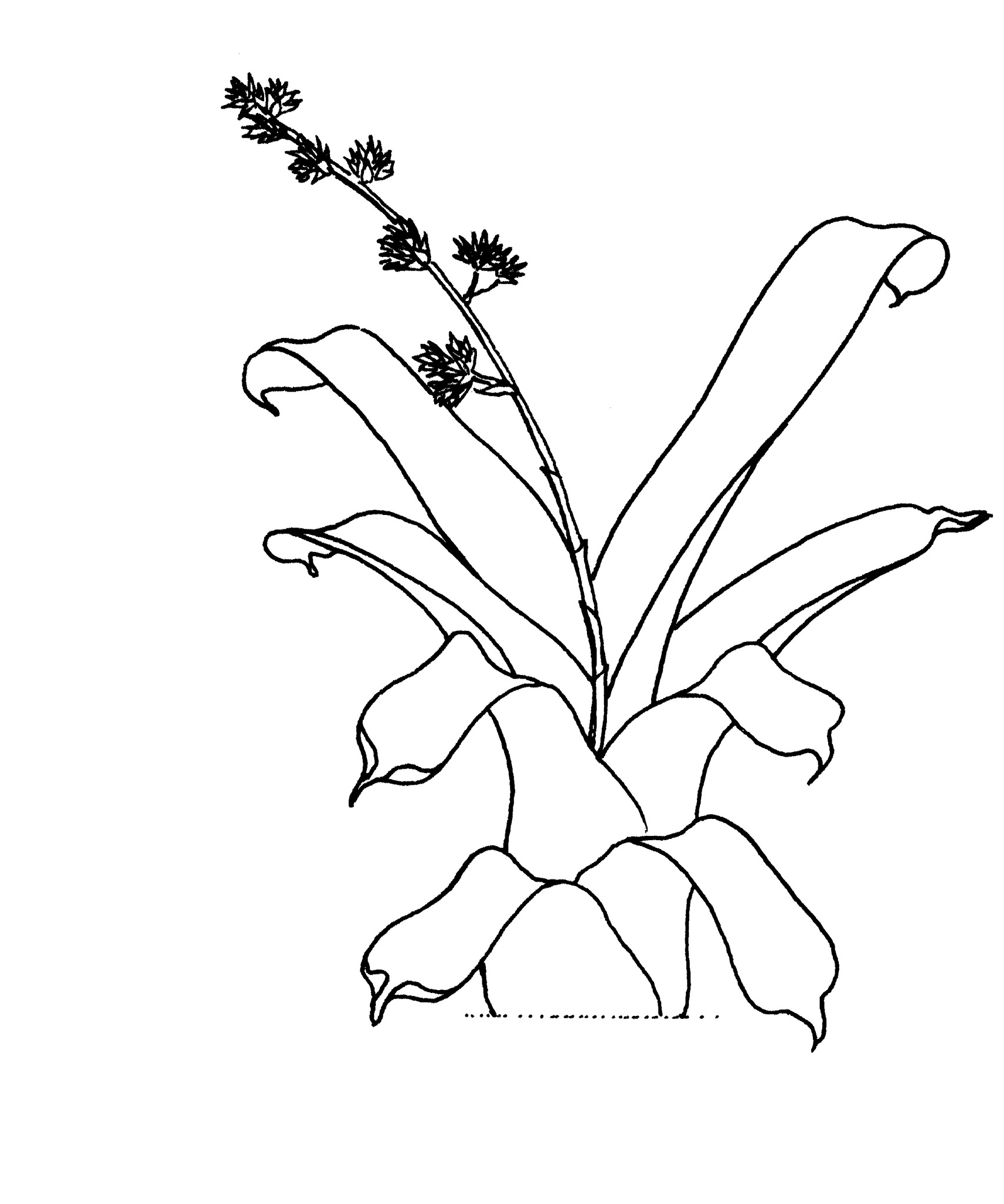
Plant flowering to 1.2 m tall. Leaves ligulate, many, in a funnel-form rosette 70-110 cm long, 7.5 cm wide; sheaths large, dark brown; margins with spines 3.5 mm long. Scape erect with ovate bracts red or yellow. Inflorescence tripinnate, woolly, red; spikes globose to cylindrical 3-7 cm long; floral bracts 2-3 cm long, red or purple; sepals 15-18 mm long, hairless; petals 2 cm long, purple; stamens included.
Northern parts of South America.
Often found in botanic garden collections but difficult to grow without winter heat.
H. augusta (Vell.) E. Morren from south-eastern Brazil grows to 1.2 m high. Leaves many in broad rosette, 60-120 cm long, 10 cm wide; sheaths large with small brown scales; blade broadly pointed, hairless above, with 2 mm long marginal spines. Scape erect, stout, with bracts somewhat deciduous. Inflorescence broadly pyramidal, laxly 3-4 pinnate, 35-60 cm long, dark brown woolly; spikes globose, 12-20 mm long; flowers to 11 mm long, fragrant; sepals 4.5 mm long; petals 7 mm long, blue; stamens protruding.
H. corriea-araujei Pereira & Moutinho from eastern Brazil grows to 1.7 m tall. Leaves ligulate, to 1.5 m long, 6-8 cm wide, forming a tubular water reservoir; sheaths 20-30 cm long, brown scaled spines near top 4 mm long; blades linear, dark green marked with white irregular cross-bands on both sides, with 2 mm long marginal spines. Scape erect with narrowly triangular bracts 10-12 cm long. Inflorescence 42 cm long, tripinnate, laxly pyramidal, white woolly except petals; primary bracts 3-8 cm long; spikes elliptic to 3 cm long; floral bracts green, sepals green, petals yellow, stamens included. The most common species in cultivation.
Source: (2005). Bromeliaceae. In: . Horticultural Flora of South-eastern Australia. Volume 5. Flowering plants. Monocotyledons. The identification of garden and cultivated plants. University of New South Wales Press.
